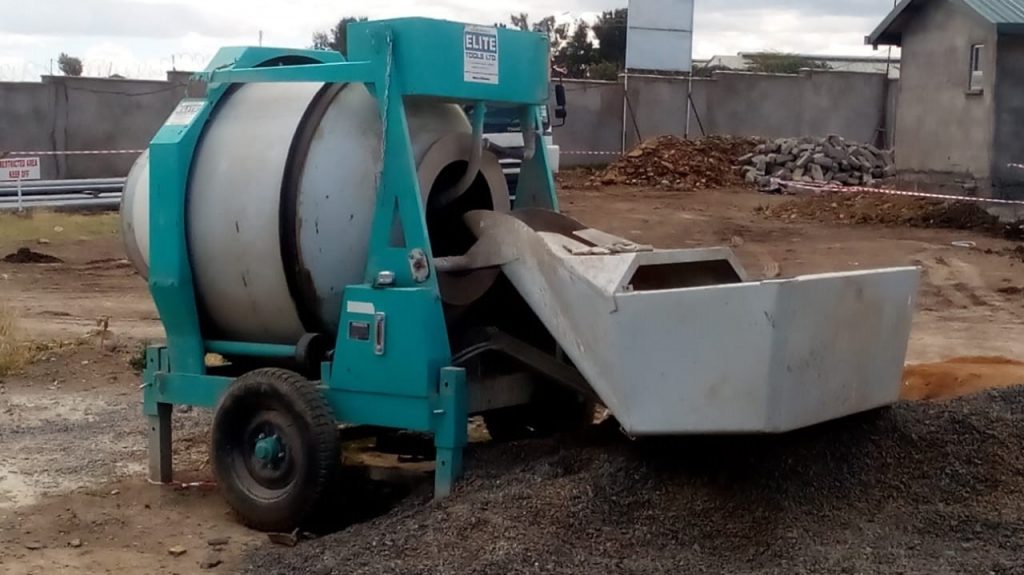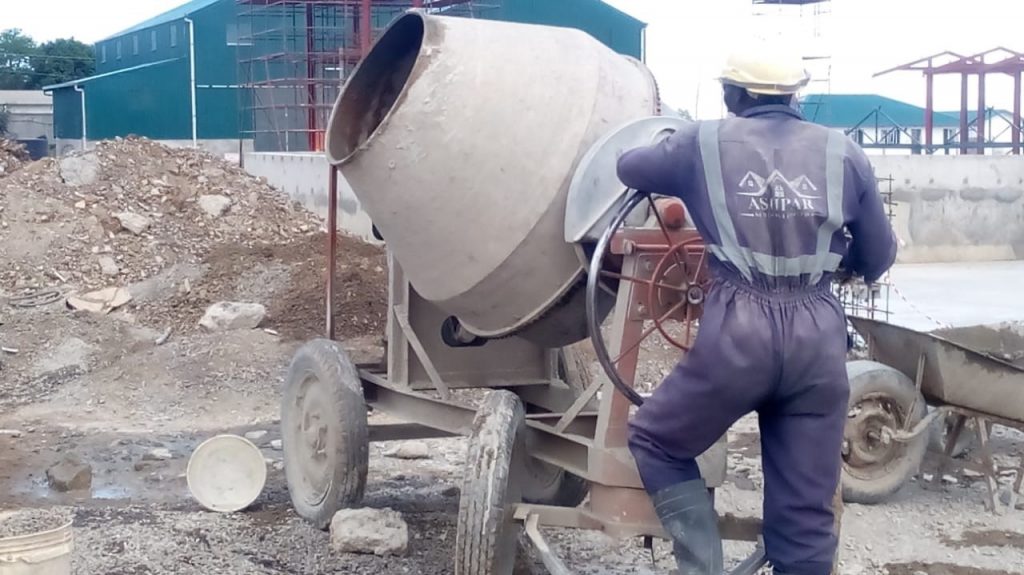Concrete consists of cement, water and aggregates that have been mixed together in proper proportions and allowed to cure and gain strength. There are two types of concrete mixing operations; transit mixed which involves the concrete being batched in a central plant and transported to the job site in transit mix trucks. Second being the central mixed where concrete is completely mixed in a stationary mixer and transported to the project in either a truck agitator, a truck mixer operating at agitating speed or a non-agitating truck (Peurifoy, 2005).
Types of Concrete Mixers
In this article, we will discuss two main categories of mixers as identified by Ferraris (2001), which include:
- Batch Mixers: These produce concrete one batch at a time. After a single batch, the mixer needs to be emptied completely, cleaned if possible and reloaded with materials (ingredients) for the next batch of concrete.
- Continuous Mixers: The concrete ingredients are continuously entered at one end as the fresh concrete exits the other end.

Batch Mixers
There are two types of batch mixers which can be distinguished by the orientation of the axis of rotation:
- Horizontal/inclined axis of rotation: these are the drum mixers. They have a drum with fixed blades rotating around its axis.
- Vertical axis of rotation: the pan mixers. They may either have the blades or the pan rotating around a vertical axis.
Drum Mixers
The blades are attached to the inside of the movable drum. They serve to lift the materials as the drum rotates. In each drum rotation, the lifted material drops back into the mixer at the bottom of the drum and the cycle starts again.

Drum mixers can be grouped into three sub-groups as follows:
- Non-tilting drum mixers
- Reversing drum mixers
- Tilting drum mixers
Non-tilting drum mixers have a fixed drum orientation. Here, materials are added at one end and discharged at the other end.
Reversing Drum Mixers
The same opening is used to add the ingredients and to discharge the concrete. The drum rotates in one direction for mixing and in the opposite direction for discharging the concrete. It batches up to one cubic meter of concrete.
There are two types of blades attached to the inner walls of the drum. One set of blades drags the concrete upwards and towards the centre of the mixer when the drum rotates in one direction. The second set of blades pushes the concrete towards the opening when the drum rotates in the opposite direction. Theses blades have a spiral arrangement to obtain the desired effect for discharge and mixing.
Tilting Drum Mixer
For this type of a drum mixer, the inclination of the tilt can be varied. It usually produces less than 0.5 cubic meters of concrete per batch.
When the drum is almost horizontal (i.e. inclination is approximately 0º), more energy is provided to the concrete because more concrete is lifted to the full diameter of the drum before dropping. It is during the drop that the concrete is knitted and mixed. Therefore, the higher the drop, the higher the energy imparted to the concrete.
To discharge the mixed concrete, the drum is tilted downwards.

Pan Mixers
It works by the way of a cylindrical pan, which is either fixed or rotating, contains the concrete to be mixed, while one or two sets of blades rotate inside the pan to mix the materials and a blade scrapes the wall of the pan. The shape of the blades and the axis of rotation vary.
The scrapper is a blade that is suspended at an angle near the inner wall of the pan. Its role is to scrape the concrete that tends to stagnate near the wall of the pan from the wall and to push it inwards so that it encounters the rotating blades. If the pan is rotating, the scrapper can simply be fixed.
To discharge concrete, the mixer is usually emptied through a trap at the bottom.
Continuous Mixers
It derives its name from the fact that materials are continuously fed into the mixer at the same rate as the concrete is discharged. They are usually non tilting drums with screw type blades rotating in the middle of the drum. The drum is tilted downward toward the discharge opening.
Continuous mixers are used for applications that require a short working time, long unloading time, remote sites and small deliveries.

Further Reading:
Robert. L. Peurifoy, P.E. (2005) Construction Planning, Equipment, and Methods.
Ferraris, C. F. (2001) Concrete Mixing Methods and Concrete Mixers: State of the Art. In Journal of Research of the National Institute of Standards and Technology, vol. 106, 391-399.
You Might Be Interested in:
- What is Bluebeam Revu? Intuitive Award-winning PDF Solution for Construction, Architecture & Manufacturing
- ARCHICAD: Intuitive BIM made by Architects for Architects
High Discharge Dumper and Backhoe Loader in Action
Join me on Patreon! https://t.co/RjNcQjo2C2
— QuantBuild Academy (@quantbuild_KE) July 27, 2020


we want to join your academy.